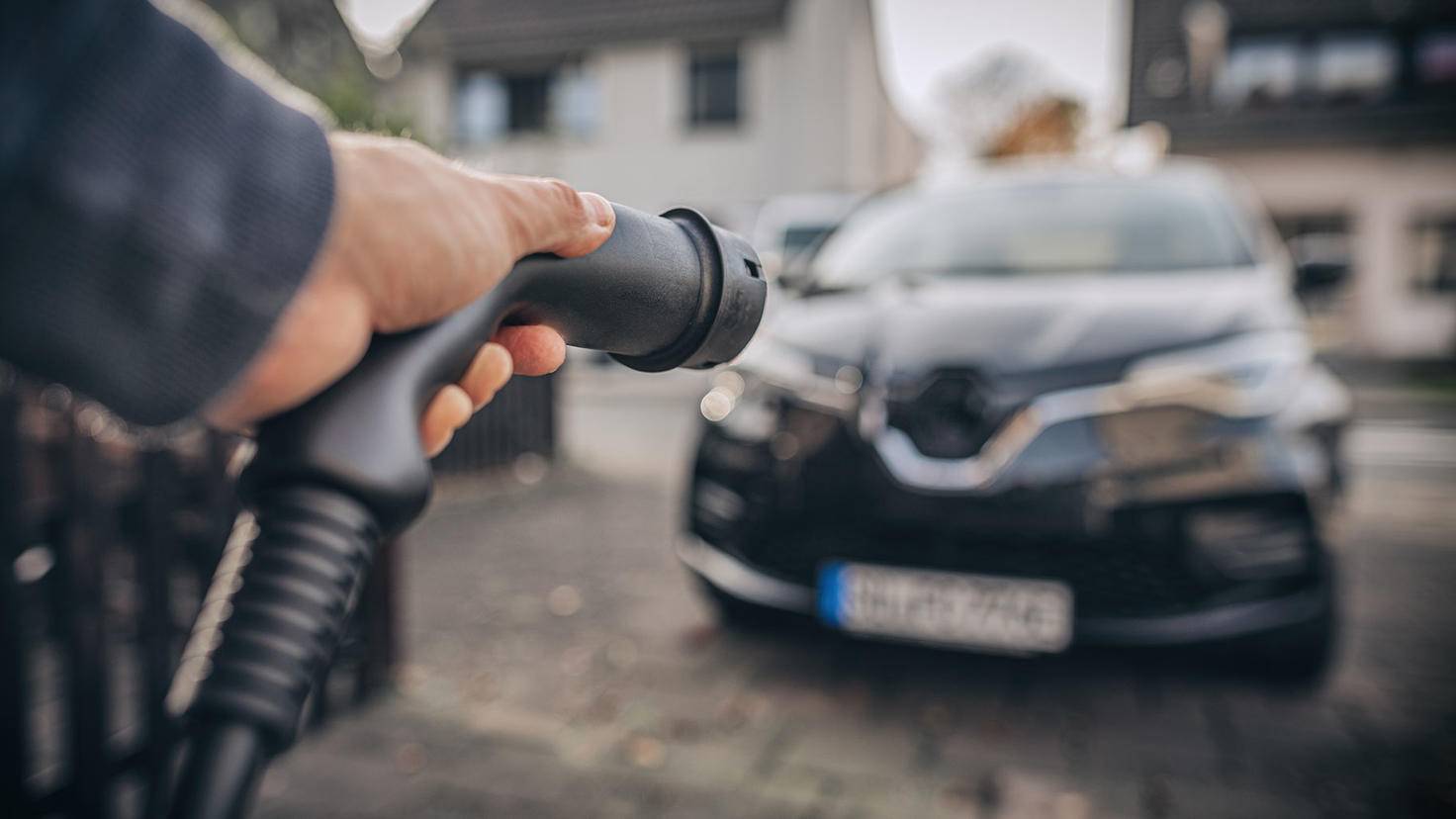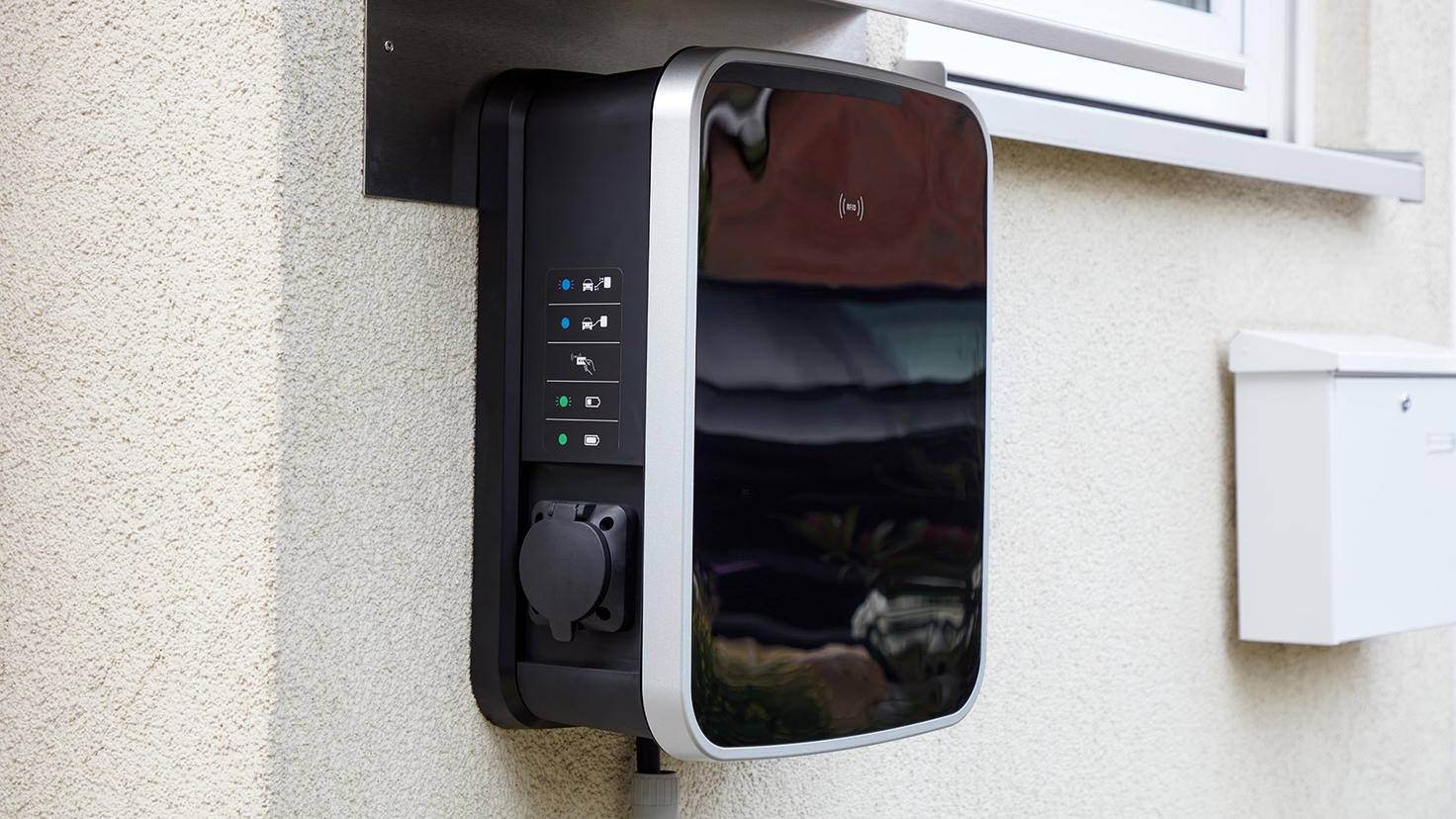Wallbox for the home: tips on models, installation and control

Would you like to charge your e-car in a relaxed manner on your own doorstep instead of waiting annoyed at the next public charging station? It works with your own charging station for the electric car. Here you can find out what you should consider before buying a wall box.
By Sonja Angerer
Sometimes there is a real fight for the few charging stations on site, the charging station in front of the supermarket is permanently occupied. In many areas, the charging infrastructure for e-cars is still incomplete. Installing a wall box there is a practical solution in your home. This is how you charge your electric car comfortably and undisturbed directly in your garage or in the yard.
The cheapest wall boxes are already available for just over 500 euros, such as these ABL wall box or some models of technician But there are also high-end charging stations that cost significantly more than 1,500 euros. In the following we explain what you should pay attention to when making your selection.
Various wallbox types and alternatives
You have various options for charging your e-car at home:
- AC Wallboxes
- DC Wallboxes
- Mobile charging stations
- Portable wall boxes
- emergency charging cable
a notice
The following applies to all charging options: Check which plug your e-car has. If the wallbox of your choice has a different connection than your e-car, you have to buy an adapter.
AC Wallboxes work with alternating current (AC = Alternating Current). Since an electric car requires direct current, a converter in the car converts the alternating current into direct current. AC wallboxes are the most common home charging solution today. In Europe, these wall boxes almost always have a so-called type 2 plug (also called Mennekes plug). Type 1 plugs are only common in older electric cars from Asia and North America.
DC Wallboxes supply the direct current (DC = Direct Current) required by the electric car directly, so that the converter in the car can be bypassed. With suitable vehicle types, this results in a much shorter charging time. However, direct current wall boxes are still very expensive and are therefore rarely offered for private households. CSS plugs (also called Combo-2 plugs) and the Japanese standard plug CHAdeMO are common on DC charging stations.
Mobile charging stations as the ECC Series 3 from Wallbox24 are there to charge an e-car at a standard Schuko socket. The devices are available from around 300 euros, they are easy to transport and offer integrated overload and residual current protection. The type 2 plug, which is common in Europe, is also common here.
Portable wall boxes once again Portable EV charger from EM2GO are also mobile, but can usually also be connected to so-called three-phase or high-voltage sockets. They have special CEE plugs with five charging contacts (instead of two as with normal Schuko plugs). Three-phase sockets are found, for example, in industrial plants to operate large motors and the like. They deliver a significantly higher mains voltage than the 230 volts that are usual at home – and thus charge e-cars significantly faster than normal Schuko sockets.
emergency charging cable are present in every e-car. In theory, you can use it to charge your Stromer from the living room socket. However, it can take a full day to fully charge the electric car battery. This generates a lot of heat, which damages the battery. If something goes wrong, home electronics can catch fire. The emergency charging cable should therefore only be used in an absolute emergency and only for a short time.
Before installation: Register the Wallbox or have it approved

For more powerful wallboxes you need a permit.
Image: © stock.adobe.com – THHORSTEN MALINOWSKI 2022
You only have to register wall boxes with an output of up to and including 11 kW (kilowatts) with your network operator. If you want to use a more powerful wall box from 12 kW, for example from the WB24 Wallbox EC Series, you need the approval of the local network operator in advance. This is not necessarily your electricity provider, so you should inquire in advance.
Who registers the Wallbox?
If you are the owner of your house and property, you can initiate the above steps directly yourself. If you live for rent or own an apartment in an apartment building, you need the approval of the owner or the community of owners. Don’t worry: In principle, the installation of a wallbox can no longer be refused today.
Owners or the community of owners only have a say in how and where you attach your wall box. You usually bear the costs. You can take the charging station with you when you move out or have it replaced. If all parties agree, you can register your Wallbox with the network operator: In a community of owners you do it yourself, if you live for rent, you coordinate this with the owner.
Talk to your electricity provider
A timely consultation with your electricity provider makes sense. Some offer cheaper electricity tariffs especially for wall boxes or subsidize your wall box. Important to know: The support program of the KfW (Kreditanstalt für Wiederaufbau) for the installation of wall boxes in private households has recently been exhausted (as of April 2022). There will be further funding opportunities in the future – but it is not yet clear when they will come.
Wallbox installation: Only by professionals

Installation should only be performed by an electrician.
Image: © stock.adobe.com – Photo Ruhr area 2022
Wall boxes are usually installed on a CEE connection, i.e. a socket with power or three-phase current. This is probably how your electric stove is connected. This installation may only be carried out by an electrician. Even the best wall box can endanger your life and that of others if it is not connected correctly.
Use and monitor the charging station: Apps and RFID cards
You can control most wallboxes using a smartphone app. That’s a fine thing. With an app you can control your charging station via WiFi, the LTE mobile network or Bluetooth – depending on the model. Typical functions of a wallbox app are:
- Start and stop charging
- Timed loading
- View energy consumption
- Management of multiple users
- Authorization of Charges
- Control and monitor charging power
Authorization of Charges
So that not everyone can simply charge their e-car at your wall box, charging processes usually have to be authorized. That means the user has to identify himself.
For models with a smartphone app, the charging process is often authorized via this app. As an alternative (or in addition), so-called RFID cards (Radio Frequency Identification) are used for this purpose. Each user gets their own card and can thus be clearly identified. As a rule, a wall box already comes with a few cards. But you can also buy them later, like these RFID cards from EM2GO.
a notice
If a wallbox does not support this authorization, you should avoid it – especially if you want to install the charging station in a place that theoretically everyone has access to.
Summary: You should pay attention to this before buying a wall box
- Decide: Do you want a permanently installed wall box or a mobile model?
- Make sure that the plug of your electric car is compatible with the wall box of your choice. Alternatively, you need an adapter.
- You only have to register charging stations with an output of up to 11 kW with the network operator.
- The grid operator must approve wall boxes with a power output of 12 kW or more.
- If you live for rent or have a condominium, you need the consent of the owner or the community of owners.
- Find out about funding options for your wallbox, for example from the KfW or the local network operator.
- Each charging station must be installed by an electrician – allow for the cost of this.
- Make sure that your wallbox supports the authorization of charging processes, e.g. via app or RFID card.
- Charging stations with app control are particularly practical.
Reference-www.turn-on.de
